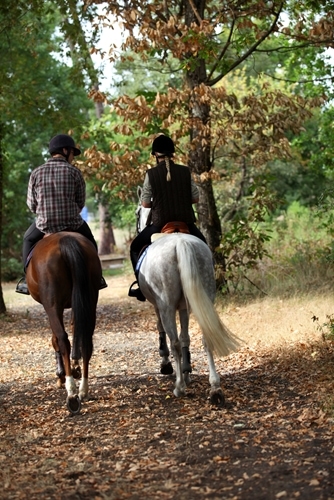Like royal houses or inheritance disputes, bloodlines are important in the world of horses. Horse owners, whether they’re about the race or show, want to pass on their champion animal’s genes and skills to a second generation, and proper breeding is key to this. It’s the chance to create a veritable horse dynasty!
Horses’ mitochondrial Adam
The extent to which bloodlines are important is clear when taking even a cursory glance at the history of thoroughbreds. Just as every single human on the globe is believed to be descended from a single woman – dubbed ‘Mitochondrial Eve’ – racehorses have their own common ancestor, according to National Geographic.
A study conducted by Patrick Cunningham of Trinity College in Dublin, Ireland found that a whopping 95 percent of the half a million thoroughbreds alive today are descended from just one stallion: the Darley Arabian, who was born in 1700. In fact, according to The Guardian, it turns out that even the other 5 per cent of racehorses are descended from a narrow gene pool – 27 other horses, to be exact, all of whom were used by European royals more than three centuries ago.
This attitude remains alive among today’s horse owners, who, understandably, want to keep their favorite animals alive in a sense for generations upon generations by breeding them. But to successfully breed your horse, it’s not just a matter of understanding equine health – it’s also a matter or having a firm grasp of horses’ breeding behaviors.
The breeding game
As our knowledge of wild horses’ breeding patterns shows us, getting horses to mate involves more than just pairing a stallion and a mare together, leaving and coming back in a few hours. Like people, no two horses will inevitably match.
But first, a short primer on how horses breed in the wild. As the university of Wisconsin-Madison’s Department of Animal Sciences explains, horses, both domestic and wild, will gather together in bands, or informal groups of horses with a single stallion and a number of mares. By demonstrating dominant behavior and establishing superiority over other stallions, it’s traditionally been held that the stallion will set up a monopoly on breeding with the mares and serve as the ‘highest ranking’ members of the band. For this reason, such bands have often been referred to as ‘harems’.
But this is only part of the story. As Wendy Williams, author of The Horse: The Epic History of Our Noble Companion recently pointed out, horse relationships are a lot more complicated and lot less male-centric than is commonly believed.
Williams tells the story of the love-triangle between stallions Sam and Sitting Bull, and mare High Tail. Sam, the dominant stallion of his band, coupled with High Tail, whom she was with for years, while Sitting Bull, kept out of the band by Sam, looked on jealously. Theoretically, once Sitting Bull deposed Sam as the stallion (which he did), High Tail should have accepted the youngster. Instead, the mare continued to pine after Sam, eventually leaving the band to stay with the horse.
In fact, this is not uncommon. Far from the stallions being the dominant leaders of a band, mares often set the terms with the stallion following in tow, and if a mare doesn’t want to mate with a stallion, she will actively resist him. Mares will also often leave a band temporarily to be with their preferred stallion. As researcher Laura Lagos told Williams: “[Mares] prefer their own territory, but the stallion of the other band.”
Lessons for horse owners
If this teaches us anything about horse breeding, it’s that you can’t force an equine love match. Whether in heat or not, a horse will pair itself with the horse it wants, and it won’t settle for second best.
Just be sure that if you do forge a love connection between two horses that you breed them responsibly. As the Humane Society points out, over-breeding can result in thousands of horses being needlessly put to slaughter in a given year.









